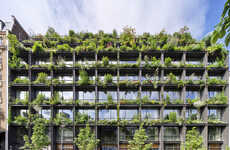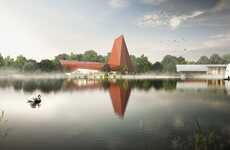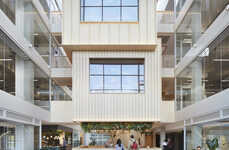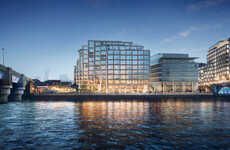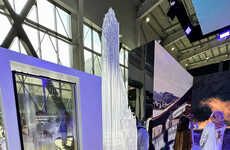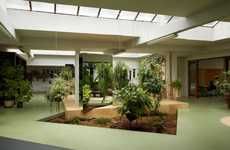
The 22 Bishopsgate Tower is Designed to Promote Occupants' Health
Rahul Kalvapalle — July 6, 2015 — Art & Design
Designed by PLP Architects, London's 22 Bishopsgate tower is set to be the second tallest building in the UK. Situated at the heart of a cluster of skyscrapers in the financial district, this tower will be the first one in the British capital to adopt the WELL Building Standard -- which aims to use architectural and interior design to promote the health and wellness of building occupants.
The pertinent design features include 1,500 bicycle parking spaces, over 100 showers and a range of classes for occupants, in addition to laundry facilities and safety training opportunities.
22 Bishopsgate is part of a growing movement to make architecture about more than just meeting basic functions, but truly enhancing the health and well-being of occupants, with the underlying thinking being that this sort of boost will improve the quality of work produced by building occupants and enhance the general experience of working and visiting.
The pertinent design features include 1,500 bicycle parking spaces, over 100 showers and a range of classes for occupants, in addition to laundry facilities and safety training opportunities.
22 Bishopsgate is part of a growing movement to make architecture about more than just meeting basic functions, but truly enhancing the health and well-being of occupants, with the underlying thinking being that this sort of boost will improve the quality of work produced by building occupants and enhance the general experience of working and visiting.
Trend Themes
1. WELL Building Standard - Adoption of the WELL Building Standard by large buildings to promote the health and wellness of occupants.
2. Workplace Wellness - Increased focus on workplace wellness through architecture and interior design for better employee productivity and experience.
3. Sustainable Commuting - Promotion of sustainable commuting practices through bicycle parking spaces, showers, and other incentives for healthier and eco-friendlier transportation options.
Industry Implications
1. Architecture - Opportunities for architects to integrate the WELL Building Standard in large building design and create wellness-promoting spaces for occupants.
2. Real Estate - Increasing importance of wellness-centric features in modern office spaces for attracting tenants and driving demand for commercial real estate properties.
3. Fitness and Wellness - Opportunities for fitness and wellness industries to partner with large buildings designed with wellness features to offer classes and services for occupants.
1.8
Score
Popularity
Activity
Freshness


